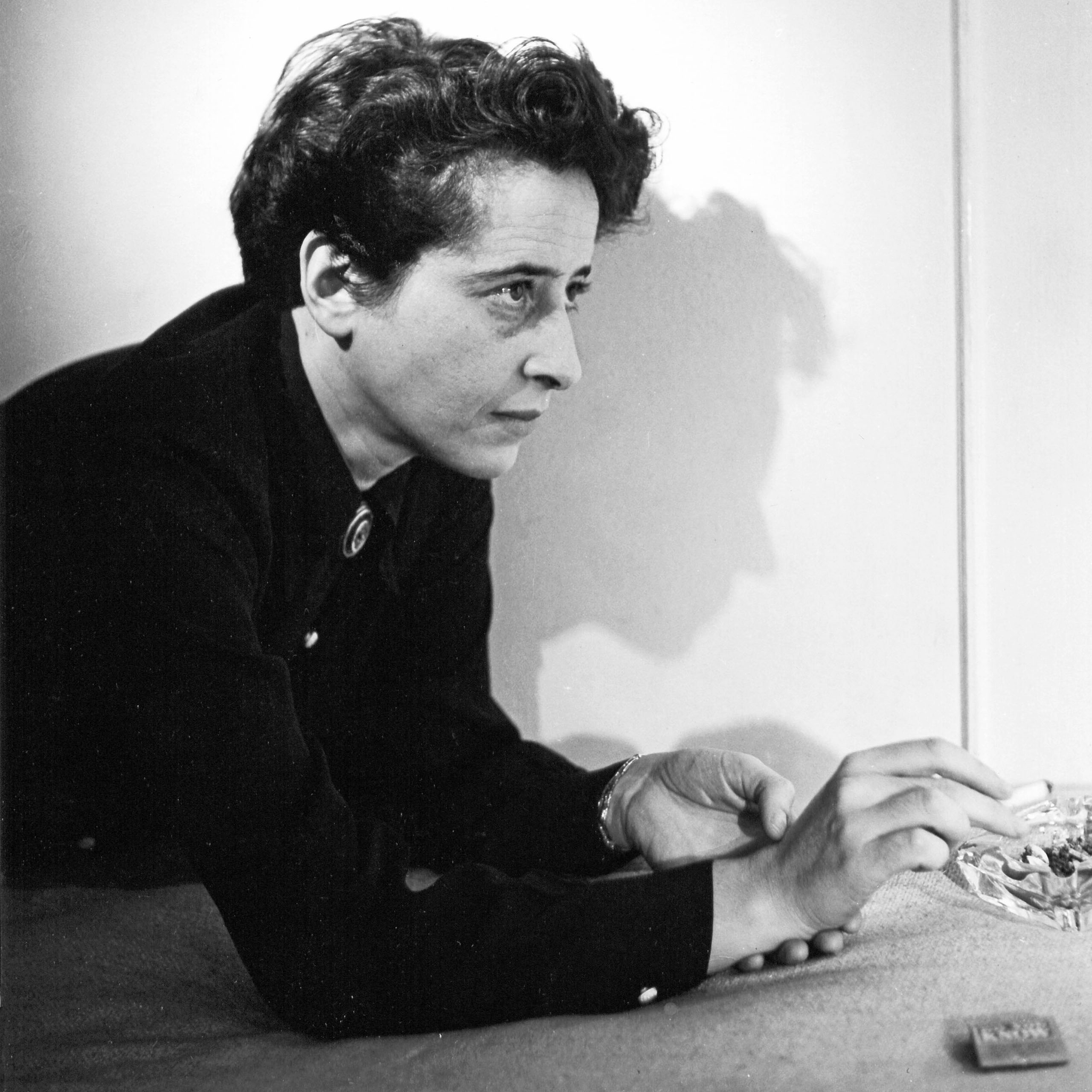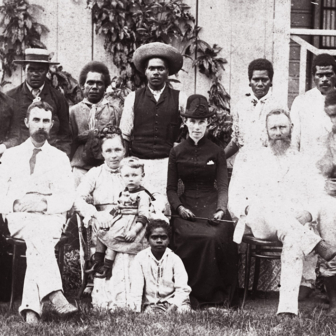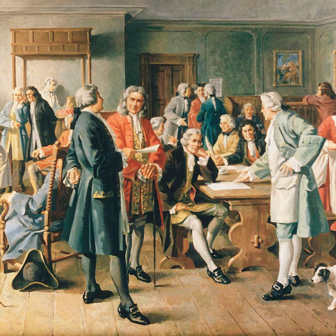“I, Hannah Arendt, was born on 14 October 1906 in Hannover,” begins the CV written by a not-yet-famous German-Jewish refugee in May 1941, just a few days after a ship chartered by the Jewish Joint Distribution Committee took her from Lisbon to the United States. With the benefit of hindsight, we know it marked a half-way point, demarcating Arendt’s European from her American life. She died on 4 December 1975 in New York, her home for thirty-four years. That much is certain.
During the American half of her life, Arendt worked variously as an editor, a journalist, a writer and a university teacher. She became known as one of the most formidable intellectuals of the twentieth century. Her books — The Origins of Totalitarianism (1951), The Human Condition (1958) and Eichmann in Jerusalem (1963) foremost among them — became hugely influential and have aged well. Her essays and published correspondence with key individuals in her life — including her lover Martin Heidegger, her mentor and friend Karl Jaspers, her first husband Günther Anders and her second husband Heinrich Blücher — provide yet more fascinating insights into a brilliant mind.
But it has never been easy to categorise Arendt. A famous interview she gave on West German television in 1964 began with a disagreement. “I think you are a philosopher,” the interviewer Günter Gaus said to her. “Well, I can’t do anything about that,” Arendt interrupted, “but I’m of the view that I’m not a philosopher. I think I’ve finally said farewell to philosophy. I studied philosophy, as you know, but that’s not to say that I stuck with it.”
The biographer is expected to fill in blanks, eliminate uncertainties, fit episodes into a cohesive story, and provide historical context. An intellectual biography should also relate a writer’s life to the texts she left behind and construct a narrative that makes sense of the trajectory of her thinking.
Thomas Meyer’s Hannah Arendt: Die Biografie, published last year in Germany to much acclaim and due in an English translation in October, does all that. He claims his is the first book about Arendt based on archival research, but even if it weren’t he has obviously done more than others to track down written sources. For many years, he has served as editor of Arendt’s collected writings in German. His understanding of her ideas and his extensive sleuthing has produced a comprehensive picture.
May 1941 also marked Arendt’s entry into an English-language universe. Until that point she had written in German, though she was also at home in French — from 1933 until 1941 she lived in exile in France — and read classical Greek and Latin as fluently as her mother tongue. English hadn’t been part of her world until she began lessons in 1940, but it didn’t take her long to write and publish in that language. She immersed herself in an Anglophone world in the second half of her life, though she never abandoned German; in the 1964 interview she told Gaus she knew a lot of German poetry by heart and the lines kept circling at the back of her mind.
Much to his credit, Meyer is interested in Arendt’s entire oeuvre. She wrote almost all her books twice, usually first in English and then in German (sometimes based on a text prepared by a translator). These aren’t German and English versions of the same text. It’s easier to express philosophical ideas in German than in English, Arendt once remarked, while the English language is better suited to thinking politically. When she imagined her German reader, she assumed some philosophical concepts needed little explanation; her American audience was better versed in a tradition of political thought.
Meyer is a diligent chronicler who avoids anachronisms. He discusses Arendt’s life and intellectual journey against the backdrop of the first three-quarters of the twentieth century, rarely filtering it through the lens of his own times. Only when he writes about the men in Arendt’s life does he become judgemental. He disapproves of her relationship with Heidegger (as do many Arendt admirers), is critical of Jaspers, and seems to consider Blücher, the love of her life and her husband for more than half of it, a philanderer who couldn’t hold a candle to her intellectually.
Meyer is thorough. It’s only after a twenty-two-page family history that readers learn Hannah Arendt was born at 9:15 pm, weighing 3.695 kilograms. I can empathise with him: of course he wants to share all the detail he has been able to unearth. And since Arendt’s life was complex and complicated, why not document all its twists and turns?
It’s time to come clean: I found Meyer’s book unwieldy and unnecessarily slow and his curiosity somewhat antiquarian. But I am being unfair, and I know why: I began reading Meyer’s book after I had started on Lyndsey Stonebridge’s new biography of Hannah Arendt, We Are Free to Change the World: Hannah Arendt’s Lessons in Love & Disobedience. The plan was to consider these books in tandem, life chapter by life chapter. I soon abandoned that idea. Not because Meyer’s book is boring, but because Stonebridge’s is riveting. I was able to return to Meyer sooner than expected simply because I couldn’t put down Stonebridge’s fast-paced narrative.
Her approach is as anti-antiquarian as could be. She is interested in Hannah Arendt as a companion in today’s dark times. And thus her narrative has two protagonists: the biographer and her subject. “I’ve tried to think my own thoughts in the place of Hannah Arendt,” Stonebridge writes, before conceding that “there may be moments [when she] also thinks her thoughts in my place.”
The two seem to have much in common: both come across as passionate, generous and at times opinionated. They complement each other: Stonebridge is not only Arendt’s interpreter but also the one who knows about the world almost half a century after Arendt’s death. It’s different from the one Arendt inhabited, but no less out of joint. Stonebridge convinces her readers that Arendt would have much to say about a world that “seems to be in the grip of a relentlessly awful plot.”
Stonebridge’s frequent references to her own times help the reader to understand why Hannah Arendt and her writings still resonate. The fact that she is read perhaps at least as much now as in the year she died may seem surprising. After all, Arendt hadn’t gathered followers around her who would take responsibility for her posthumous reputation. Her intellectual taste might be considered old-fashioned: with a few notable exceptions, she was not much interested in contemporary political theorists and philosophers, but instead engaged with Plato and Kant. She was one of the very few women in her line of work, but did not consider herself a feminist. Her writing doesn’t support the kind of identity politics that are so fashionable these days. She could come across as arrogant, if only because she often deemed it unnecessary to translate quotes from other languages.
Besides, Hannah Arendt didn’t leave a grand theory behind. It’s not possible to draw on an overarching “Arendtian” framework in the way some people purport to explain things from a Marxian or Freudian perspective. She is not somebody on whose writings we could comfortably lean. But we can take courage from her highly original attempts to understand the world. “What I propose, therefore, is very simple: it is nothing more than to think what we are doing,” she wrote in the prologue to The Human Condition. Is there anything less simple than that? Thinking, though, was something Hannah Arendt was particularly good at.
“She wanted to think exactly like Rahel Varnhagen, to shadow her thought and experience as closely as she could so that she might better understand her own emotional, intellectual and at the time often perplexing life,” Stonebridge says about Arendt’s relationship with the German-Jewish writer and salonnière whose biography Arendt finished writing in Paris. Arendt once called Varnhagen her closest friend, although by then that friend had been dead for about a hundred years. Walter Benjamin and Franz Kafka occupied similar roles in Arendt’s life.
Stonebridge’s relationship with Arendt is evidently also close, which makes hers a particularly personal book. Shadowing her biographical subject’s thought and experience, she followed literally in Arendt’s footsteps. Visiting Montauban in the southwest of France, the town where Arendt stayed in the summer of 1940 after her escape from the Gurs internment camp, Stonebridge “carefully counted the sixty steps across the square that it would have taken Arendt to get from her stuffy room to the cool companionship of the library.”
“Perplexing” is an attribute that appears more than once in Stonebridge’s book. For good reason: it characterises the twists and turns not only of Arendt’s life but also in her way of thinking. Stonebridge quotes Arendt quoting Plato’s rendering of a Socratic dialogue: “It isn’t that, knowing the answers myself I perplex other people,” Socrates reportedly said to Meno. “The truth is rather that I infect them also with the perplexity I feel myself.” Whereupon Arendt adds: “Which, of course, sums up neatly the only way thinking can be taught.”
Of course? Arendt was an accomplished teacher who often performed her thinking in front of an audience — in fact the text Stonebridge uses here was labelled “a lecture” when first published in 1971 — but having been a teacher I know that many students resent being infected with perplexity. It requires skill not to lose them.
Skill is also on display when Stonebridge confronts her reader with the perplexities of Arendt’s ideas and life without trying to dissolve them. Arendt would have appreciated that. “I am often captured by the sense that there exists something she will not give up; something precious, mysterious even to herself, but very strongly present,” Stonebridge writes.
But isn’t that just the point of all of this? she might say now, chin resting in her smoking hand from her place in the bar in the underworld where the lost angels of the last century gather at dusk. That we are unknowable even to ourselves, maybe especially to ourselves, and yet capable of collective miracles? Isn’t that what you must fight for again now?
The subtitle of Stonebridge’s biography promises lessons. Arendt may have much to teach us: about indifference, about plurality and about racism, to name but three of the topics she wrote about. Stonebridge avoids turning Arendt into a Vordenker, somebody who does the thinking on others’ behalf. Arendt did not see herself in such a role either. She was principally interested in Nach-denken, in the exercise of chasing and thinking through issues that she found difficult. Such Nach-denken required close attention, patience, imagination and the willingness to leave well-trodden paths.
Without compromising her intellectual independence, Arendt relied on at least one Vordenker herself. Immanuel Kant taught her that our ability to think makes freedom possible and that how we think has moral consequences. From him she learned much else, including the idea that to think politically and critically required an “erweiterte Denkungsart,” which Arendt translated as “enlarged mentality.”
For Arendt, Kant was a familiar figure, and not just because she had read his Critique of Pure Reason when she was sixteen. Arendt grew up in Königsberg (today’s Kaliningrad), where Kant had spent almost his entire life. After having lived for more than twenty years in New York she admitted to a German journalist: “In the way I think and form judgements, I’m still from Königsberg.”
Perhaps the most important lesson provided by Arendt via Stonebridge is a challenge: Think! How not to think is also a key lesson of We Are Free to Change the World, and here the focus is on Arendt’s essay about Elizabeth Eckford and the other children known as the Little Rock Nine, who in 1957 dared to attend a racially segregated high school in Arkansas’s capital city. “As for the children, forced integration means a very serious conflict between home and school, between their private and and their social life, and… children cannot be expected to handle them and therefore should not be exposed to them,” Arendt wrote.
Here she was not mindful of the need for an “enlarged mentality.” She didn’t travel to Little Rock, she didn’t talk to Eckford and, most importantly, she didn’t take seriously the girl’s experience. Arendt didn’t to think empathetically about Eckford’s situation because she considered empathy an apolitical and therefore inadequate response. But she also failed to think critically about it. It says much about Arendt, however, that after her essay “Reflections of Little Rock” had been published she realised that she had been wrong and admitted as much in writing.
Although Arendt was a public intellectual par excellence in the second half of her life (and one who expertly used the media), she didn’t think it was her role to shape public opinion. Do you want to make an impact with your work, Gaus asked her in 1964. “To be honest with you, I have to tell you: when I’m working, I’m not interested in impact,” she replied. “And when the work has been completed?” he persisted. “Well, then I’ve finished it.” She explained that her main aim was to understand, and that writing helped her to do that. And anyway, asking her about her impact was something only a man would do: “Men are always so concerned about making an impression.”
I loved reading Stonebridge’s book because I felt that in at least four key respects she does justice to Arendt. For one, her biography is exceptionally well written. That matters because Arendt herself wrote well (in German more so than in English) and because she valued good writing. She frequently quoted poetry in her writings — and poets also appreciated reading her. The final passages of The Origins of Totalitarianism, the poet Randall Jarrell told her in 1950, “seem a sort of crushing unbearable poem, quite homogeneous, something the reader feels and understands at the same time… I feel as if I’d seen the other side of the moon.” She is well-served by a biographer whose prose is sharp, elegant and captivating.
Gaus was incredulous when Arendt insisted that she was not a philosopher. Stonebridge understands why she said “goodbye to philosophy for good.” Arendt might not have endorsed Marx’s dictum — “The philosophers have only interpreted the world in various ways, the point, however, is to change it” — but she distinguished between philosophising, on the one hand, and thinking politically and critically, on the other.
Arendt was prompted to think not because of an abstract conundrum but because the world was out of joint. Her thinking was informed by her experience as a refugee and as a Jewish woman who had been lucky to escape the fate of the millions of other Jews murdered in the Shoah. All this provides her thinking and writing with a sense of urgency.
Stonebridge shares that sense of urgency. “Hers was not a call for a return to political reason (such as you often hear today),” Stonebridge writes, “but for a kind of emergency thinking that may, she said, in the end, be all we have.” Our world is in much need of the kind of emergency thinking that Arendt practised and Stonebridge advocates.
Yet even while thinking and writing about a world out of joint, Arendt was committed to living well. Friendship and love were important to her, a fact that we might easily lose sight of when reading Eichmann in Jerusalem or The Origins of Totalitarianism. Stonebridge’s biography keeps the loving and much-loved author of these books in focus. It ends with a call to her readers, which would, I am sure, have met with Arendt’s wholehearted approval: “Now pay attention and get on with the work of resisting the sorry reality that you find yourselves in. And for goodness’ sake — a puff of smoke, raising a glass of Campari — have some fun!” •
Hannah Arendt: Die Biografie
By Thomas Meyer │ Piper │ €28.00 │ 521 pages
We Are Free to Change the World: Hannah Arendt’s Lessons in Love & Disobedience
By Lyndsey Stonebridge │ Jonathan Cape │£22.00 │290 pages




